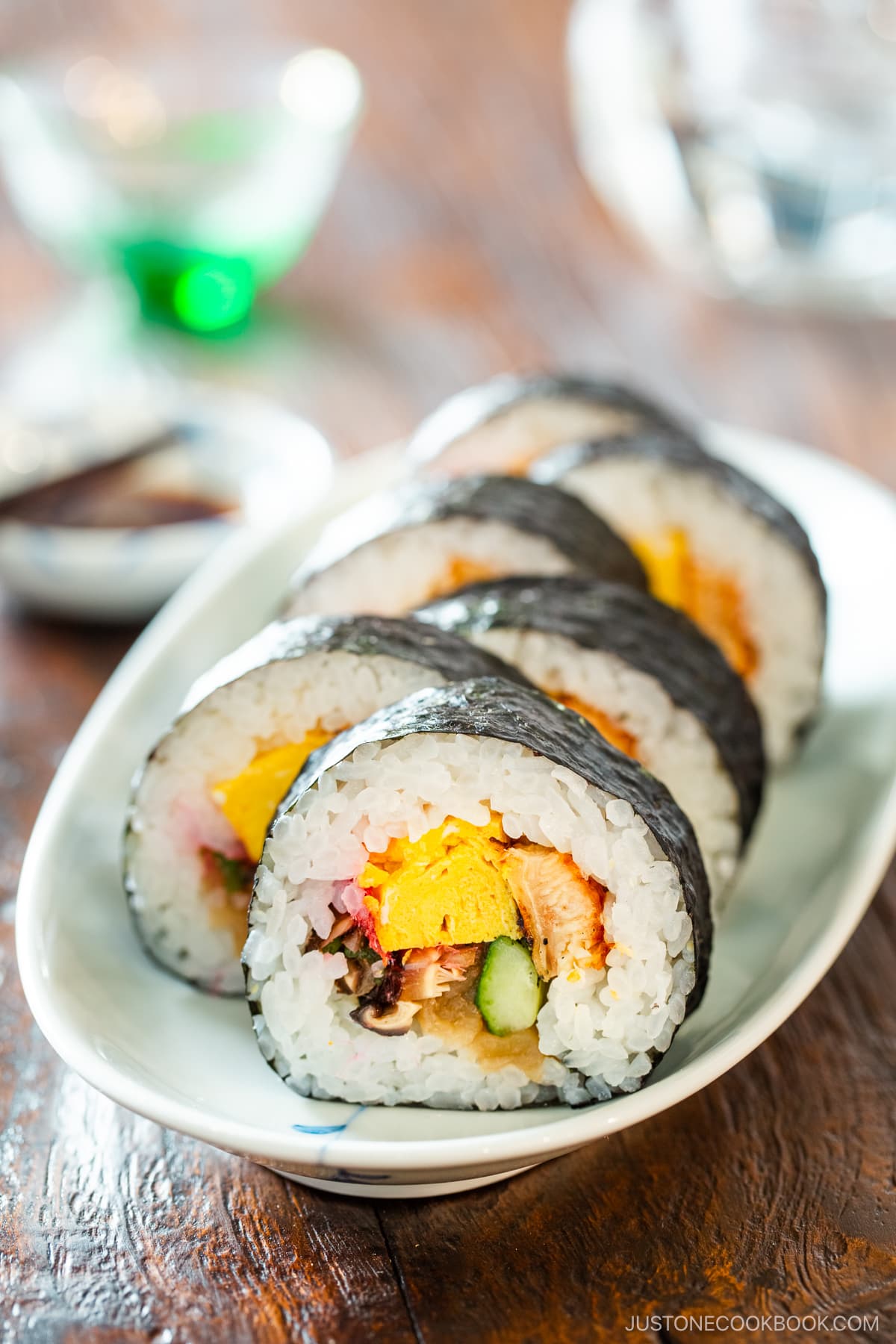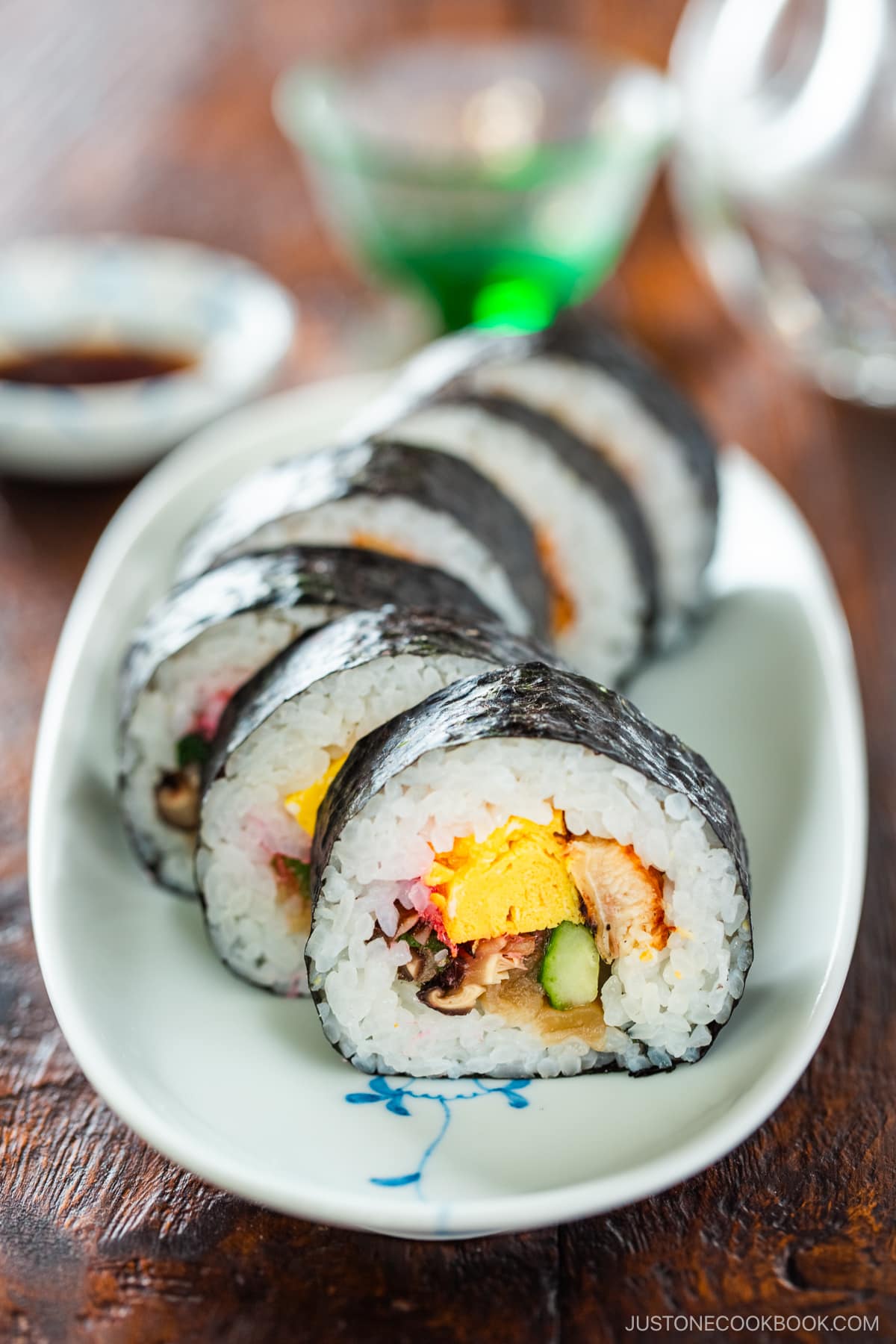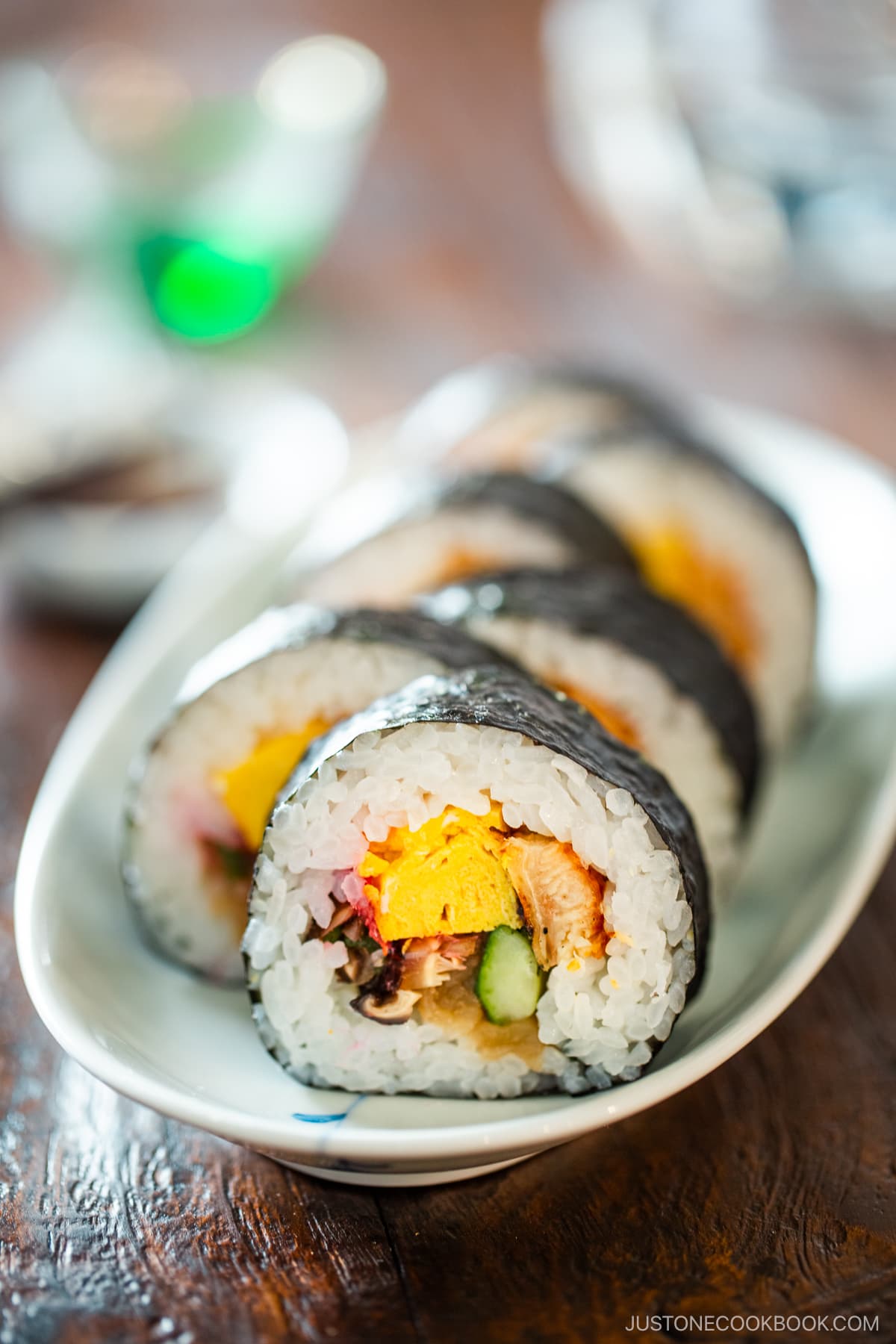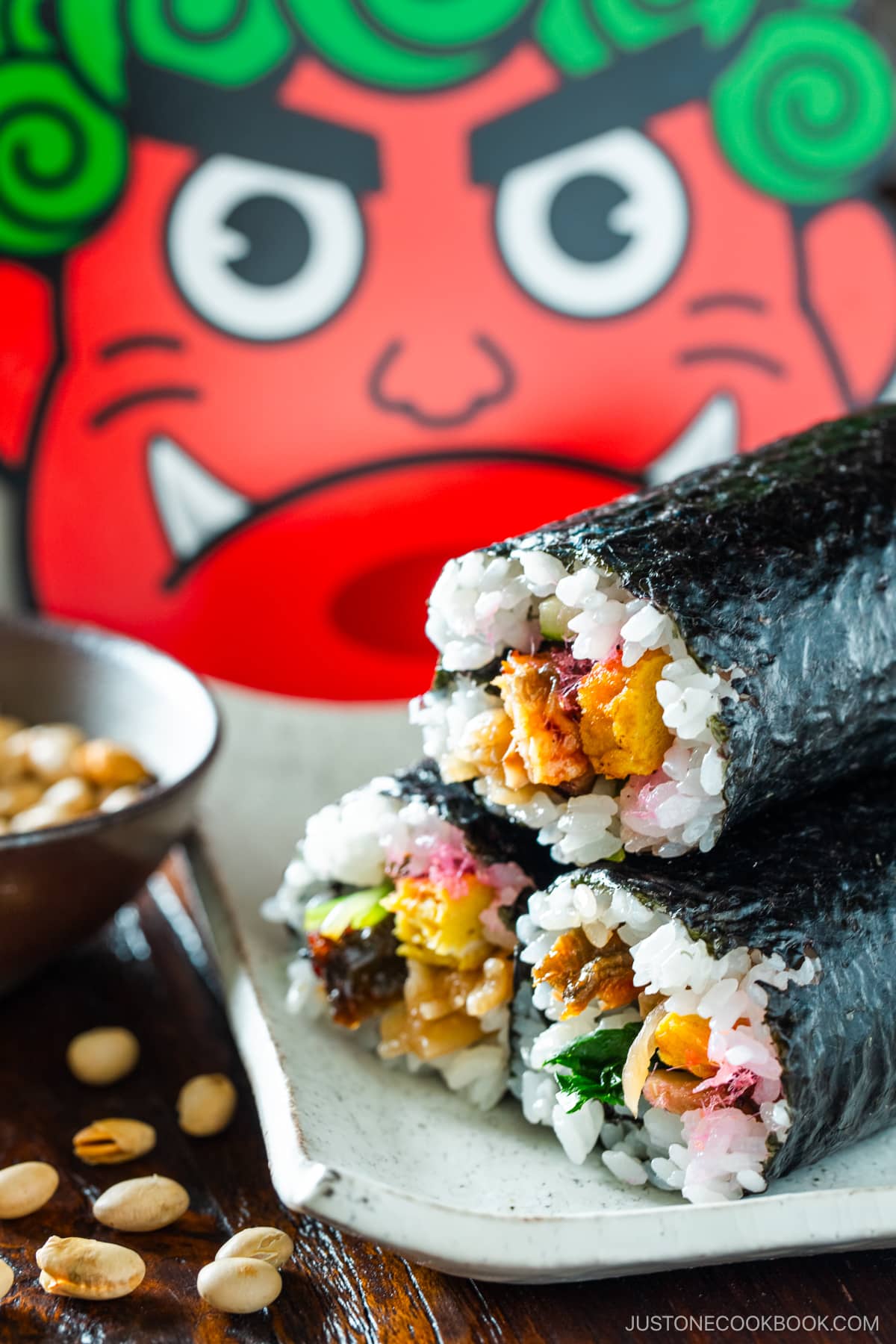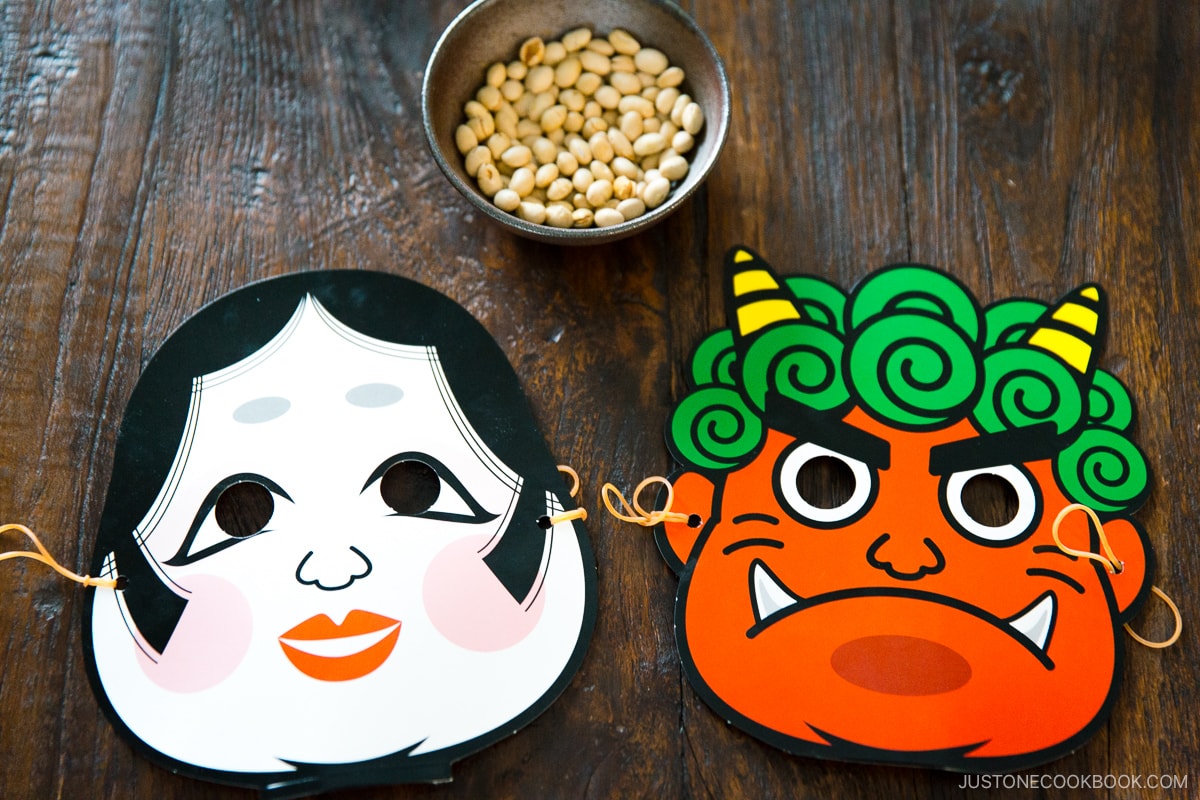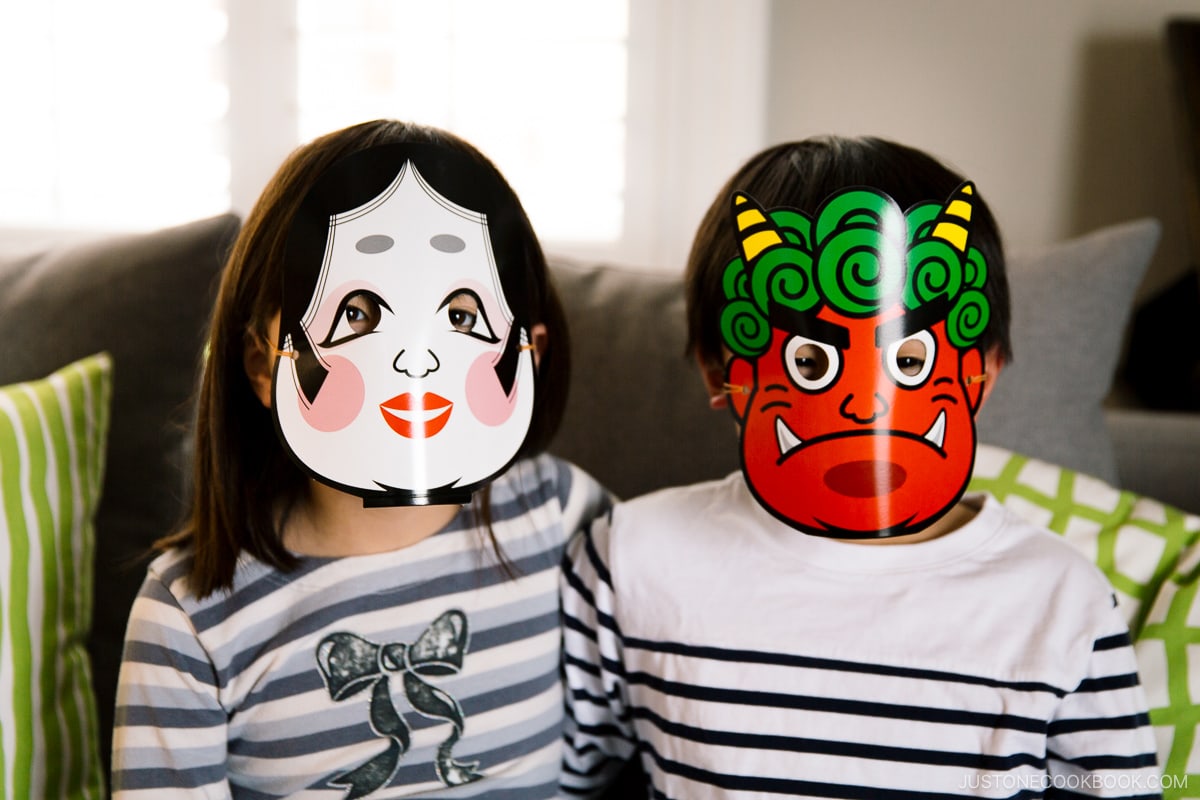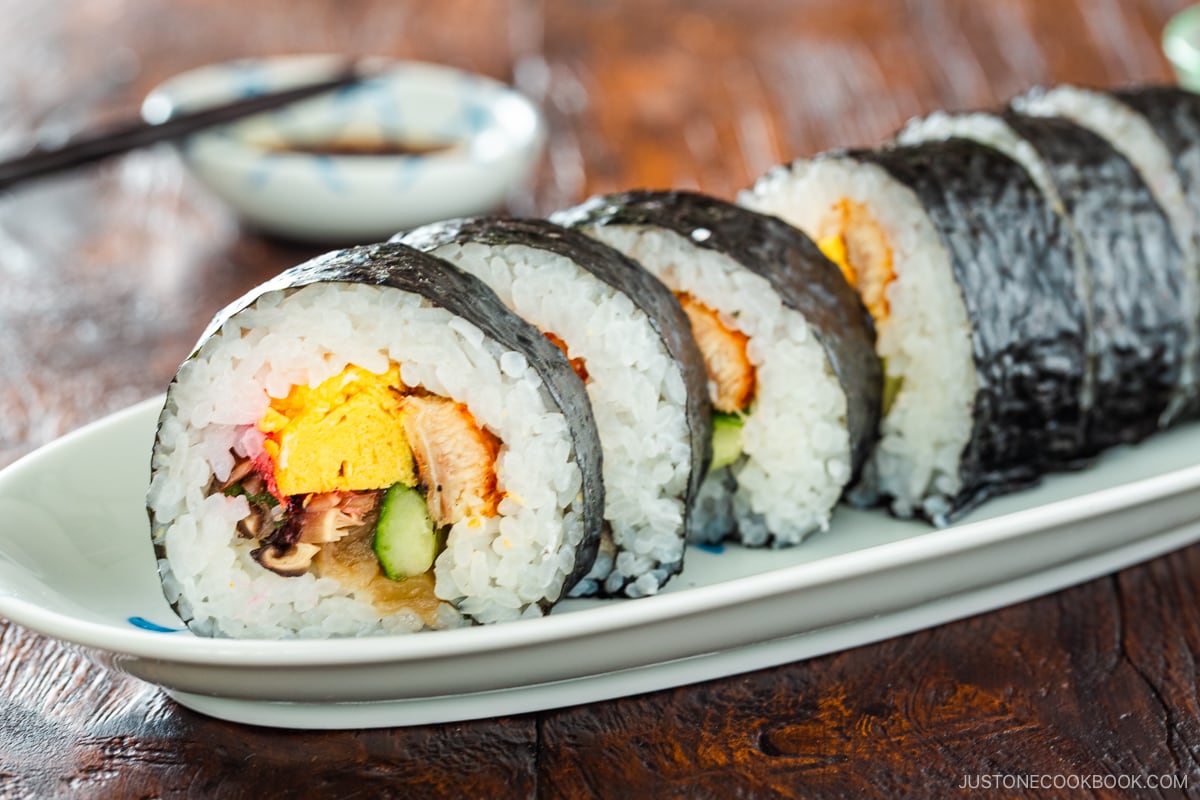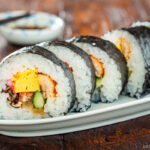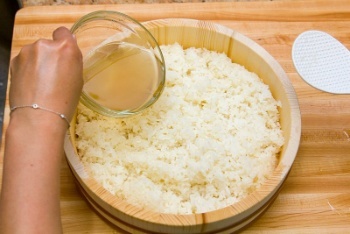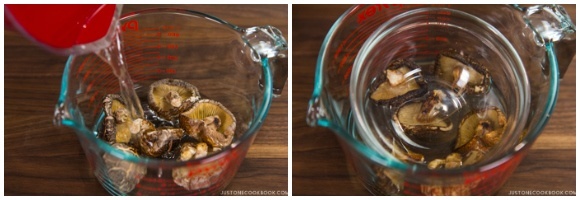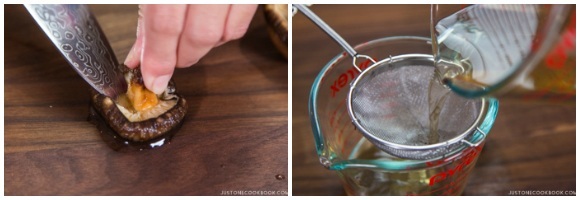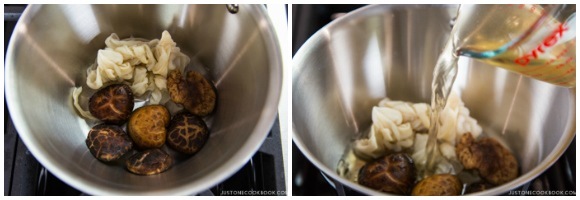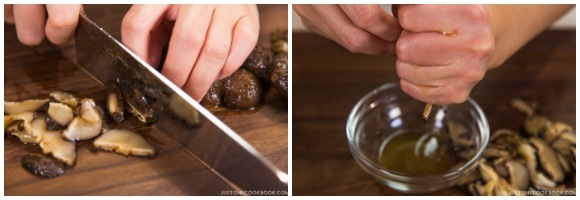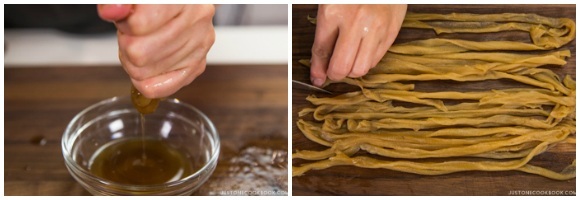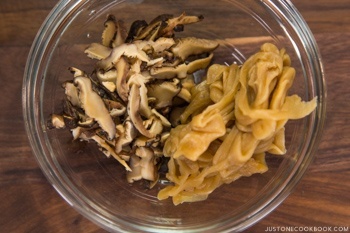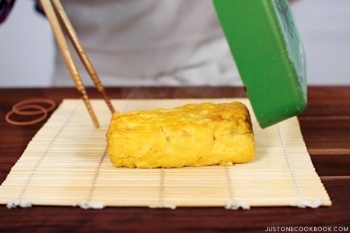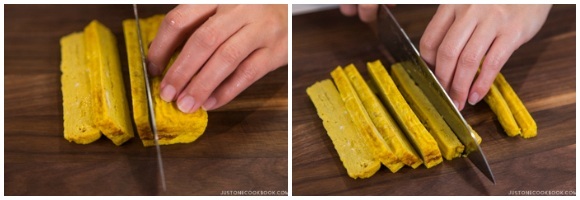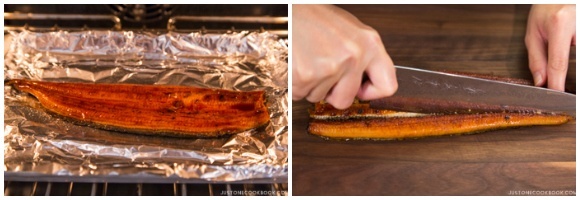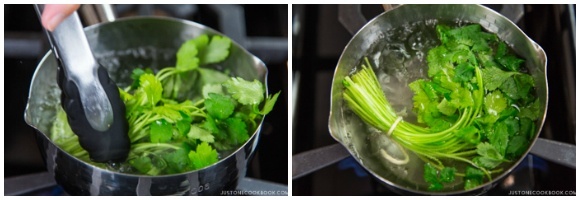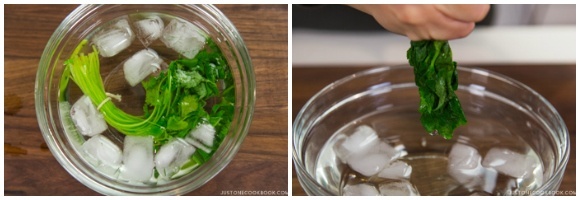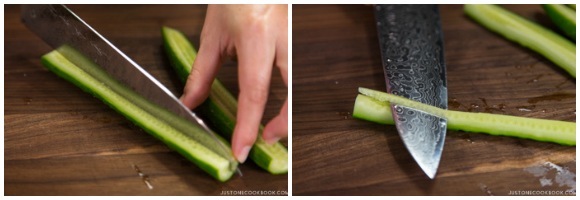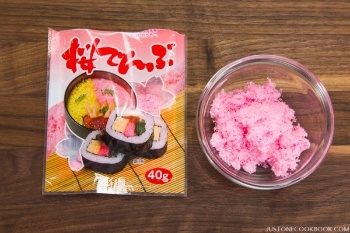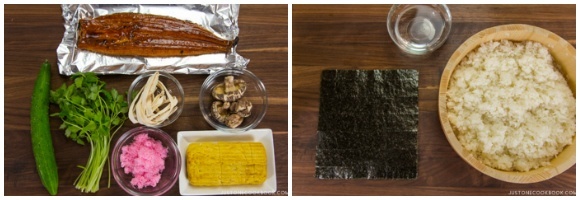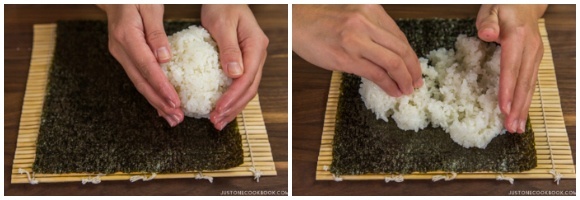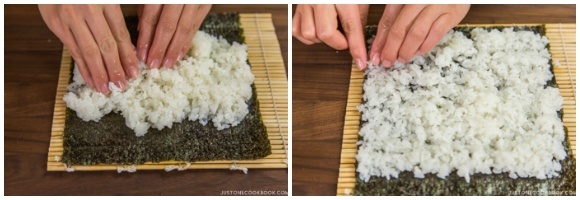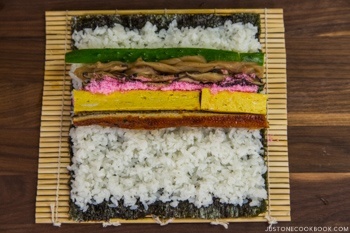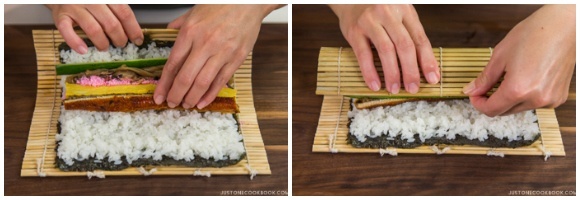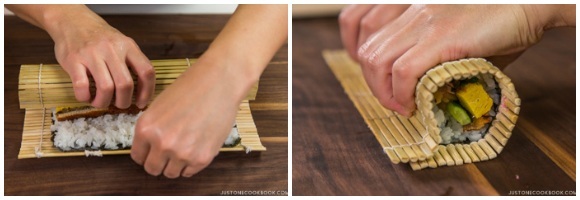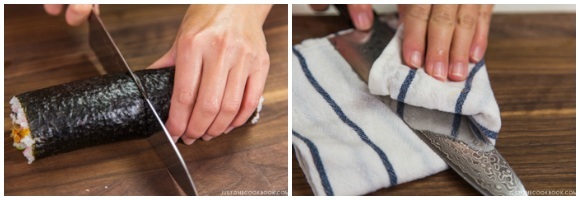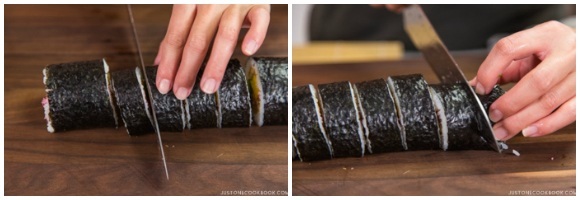When I ask people what’s their favorite sushi, the answers I often get are some types of sushi rolls, like Dragon Roll, California Roll, or Spicy Tuna Roll. In Japan, sushi usually implies the traditional style “nigiri sushi”, which consists of raw fish on top of the rice pillow. However, when we say sushi roll, it typically refers to Futomaki (太巻き)—a thick and fat sushi roll with colorful fillings.
What is Futomaki?
Futomaki (太巻き) is the most classic sushi roll in Japan. Therefore, when you say Maki Sushi (巻き寿司) or sushi roll, it implies Futomaki. With its attractive look, Futomaki is a popular sushi roll for festivity events, holidays, potluck, or bento. Here are some of the unique characteristics of Futomaki:
The diameter is about 2 to 2.5 inches (5-6 cm) thick. It incorporates a mix of fresh and dried ingredients common in the Japanese pantry. The typical filling consists of various vegetables, sometimes with cooked fish like unagi (freshwater eel) or anago (saltwater eel). It can be prepared ahead of time.
By the way, the word “Maki Sushi” is often used in the Osaka area. In the Tokyo area, sushi roll is called Nori Maki (海苔巻き). It is then further divided into Futomaki (太巻き), Chumaki (中巻き), Hosomaki (細巻き) based on the size of the rolls.
What’s Inside Futomaki (Maki Sushi)?
Each family chooses different fillings for futomaki. Some people use 5 ingredients and some include more than 10. It really depends on the family. And that is what makes Futomaki such fun sushi to share! The most common ingredients include cucumber, seasoned kanpyo (gourd strips), shiitake mushrooms, and tamagoyaki (Japanese rolled omelette). In my rolls, I include the following 7 ingredients: Other ingredients include kamaboko fish cakes (or imitation crab), koyadofu (freeze-dry tofu), shiso leaves, pickled ginger, carrots, tuna (sashimi), and salmon (sashimi). I understand some of these ingredients are hard to find in your local Asian grocery stores. You will have better luck finding the products in Japanese grocery stores. But remember, you can make futomaki with anything that you really like! Just keep in mind that the flavors should balance each other, and not have any single ingredient overpowering the rest.
Where to Buy a Sushi-Making Kit
Interesting Fact: Maki Sushi Turns into “Ehomaki” on February 3
The Japanese call this sushi roll futomaki all year round, except for one day out of the year. On February 3rd, the day of Setsubun (節分, the day before the beginning of spring in Japan), the same sushi roll is called ehō-maki (恵方巻).
What is Ehomaki?
Ehōmaki (恵方巻) is eaten uncut, like a burrito, and you would eat it while facing the lucky direction (the eho). This lucky direction changes every year depending on the zodiac symbol. For 2024, the lucky direction is east-northeast. It is said that it is good luck to use seven kinds of filling in honor of the Seven Lucky Gods (七福神), but more and more people are enjoying using a variety of toppings to suit their tastes, without worrying about the number of ingredients. There are several rules for eating ehomaki that are designed to bring you good luck. “Eating in silence” is one of them. This is because various ingredients (symbolizing good fortune) are wrapped around ehomaki, and it is said that if you talk while eating, you will lose your good fortune. This rule seems easy to follow when you’re enjoying ehomaki alone, but be careful when you’re with family or friends! On the evening of Setsubun, we have a custom of throwing roasted soybeans around the house, and outside from the window while shouting “Oni wa soto! Fuku wa uchi!” (“Devils out, happiness in”). These beans are called Fuku Mame (fortune beans) and the bean-throwing ceremony is called Mame Maki. Afterward, everyone eats the same number of beans as their own age, wishing to be free of sickness during that year. If you are interested in learning about Setubun, check out Setsubun: The Japanese Bean Throwing Festival.
More Sushi Recipes You’ll Like
Sushi Rolls or Maki Sushi (Hosomaki 細巻き) Temari Sushi Inari Sushi Temaki Sushi (Hand-Rolled Sushi)
Wish to learn more about Japanese cooking? Sign up for our free newsletter to receive cooking tips & recipe updates! And stay in touch with me on Facebook, Pinterest, YouTube, and Instagram. Editor’s Note: The original post was published on January 30, 2016. The post has been updated in January 2020.
